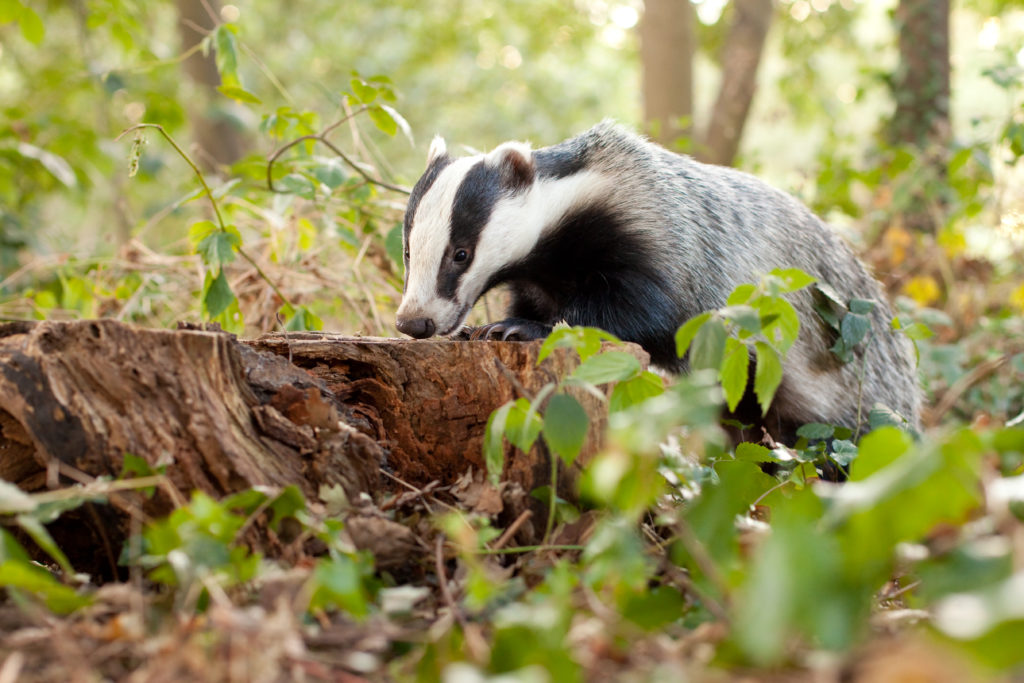
Badgers have lived in Britain for almost a quarter of a million years, making them one of our oldest native species.
Despite many of us never having seen a badger alive and in person (due to their nocturnal nature), on the 6th of October we celebrate National Badger Day. This day aims to debunk their sometimes negative reputation they have gained through the years and highlight the welfare issues surrounding these relatively harmless creatures.
We’ve put together some our favourite badger facts to help you get to know and understand these large black and white fluff balls a little more:
- The Welsh word for badgers is “moch daear” which means earth pig, however their name comes from the French word “bucher” meaning digger.
- They typically dine on tasty earthworms, however as omnivores they may also eat things like fruits and nuts (you can leave these and wet pet food in your backyard!) and they also eat small mammals like mice, rats and rabbits and the odd frog or toad.
- They live in groups up to 15 or so, called cetes but they are more commonly known as a clan.
- Badgers clans live in burrows called setts – these can span hundreds of metres with up to 40 openings. These setts are usually made in a mixed woodland with soil that is easy to dig through.
- There are just as many badgers as red foxes – they’re just not running through the towns at night looking for an easy leftover take-out meal like the urban foxes.
- Badgers can run pretty fast – almost 20 miles an hour, which is the speed restriction of a few residential areas in London.
- Despite not having natural predators, approximately 50,000 badgers are killed by cars every year.
- They have a mixed reputation of being loveable or loathed in children’s books – Tommy Brock the badger is described as grouchy in the Beatrix Potter stories, however the Badger in Wind in the Willows is a wise and respected leader!
Unfortunately despite badgers being a very important part of their ecosystem, around 15% of badgers are infected with bovine tuberculosis (bTB) which has led to the organisation of large culling attempts. The debate on the culling of badgers, the ethics around it and the environmental impact that it has is still a hotly debated topic between the government, farmers and animal science industries.
In March this year, the UK Government and Defra announced that there will be a vaccine trial for bTB which will aim to phase out the culling control method of badgers.
Confusingly, badgers themselves and their setts are protected under the Protection of Badgers Act 1992 in England and Wales where is it an offence to:
- Willfully kill, injure or take a badger.
- Cruelly ill-treat a badger.
- Dig for a badger.
- Intentionally or recklessly damage or destroy a badger sett, or obstruct access to it.
- Cause a dog to enter a badger sett.
- Disturb a badger when it is occupying a sett.
You can read the RSPCAs view on bTB and why they are against the culling of badgers here. They have also produced a very informative factsheet on Living with Badgers.
Start celebrating National Badger Day by falling in love with them! Check out the BBC’s wildlife artist interview special with Robert Fuller. He built (yes, built!) a badger sett in his backyard complete with cameras so he could film them to help with his paintings. The interview shows some of the footage from the setts (including them doing rolly pollies down the hill) – you can watch the adorable video here.
How can you get involved in #badgerday? Start by using the super cute badger emoji and start the discussion today on being badger-aware, today!
